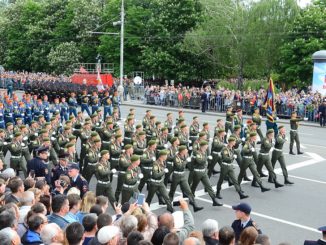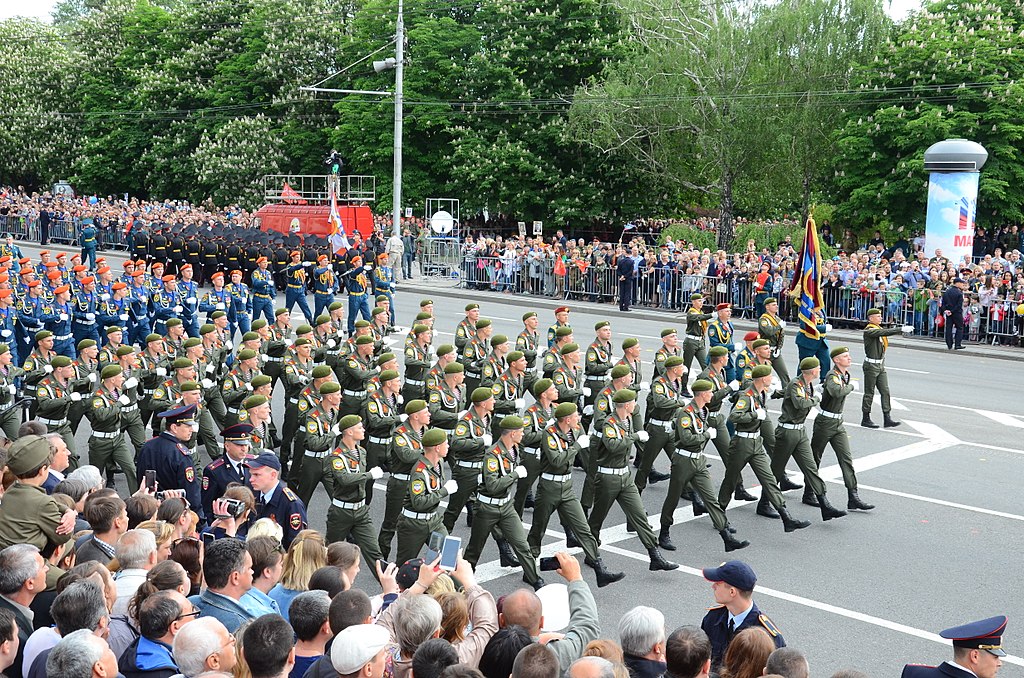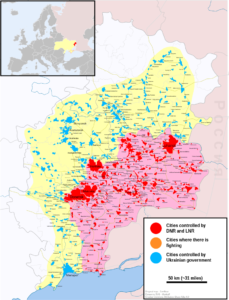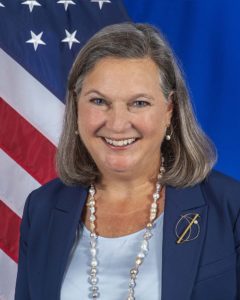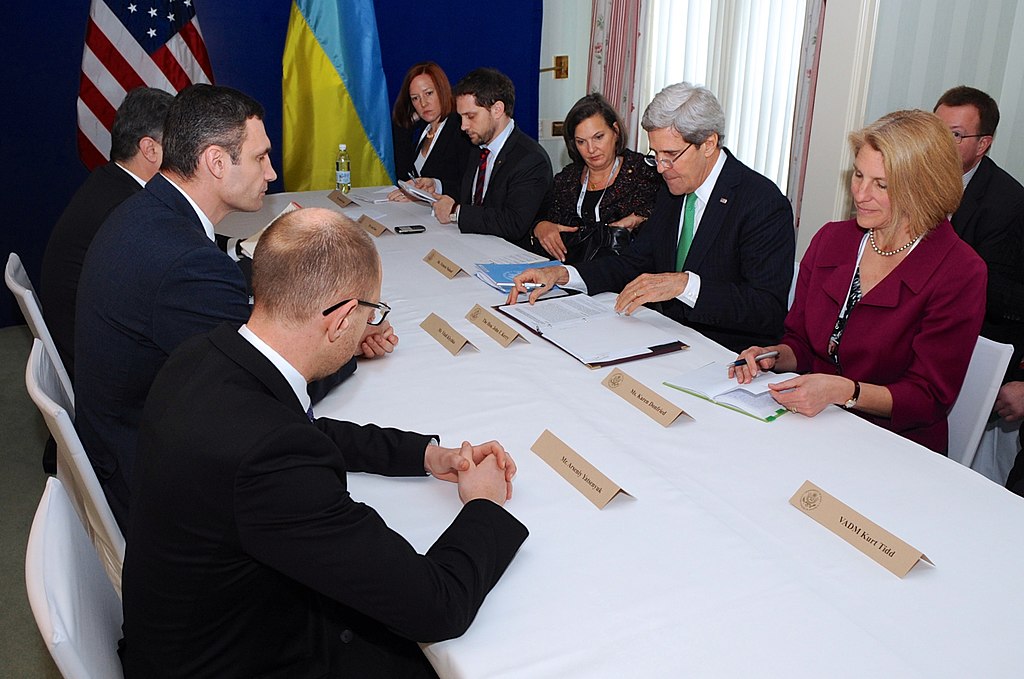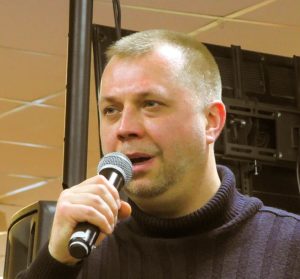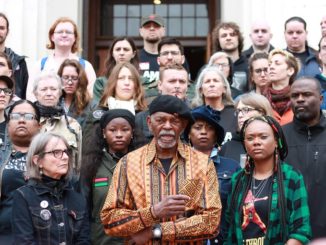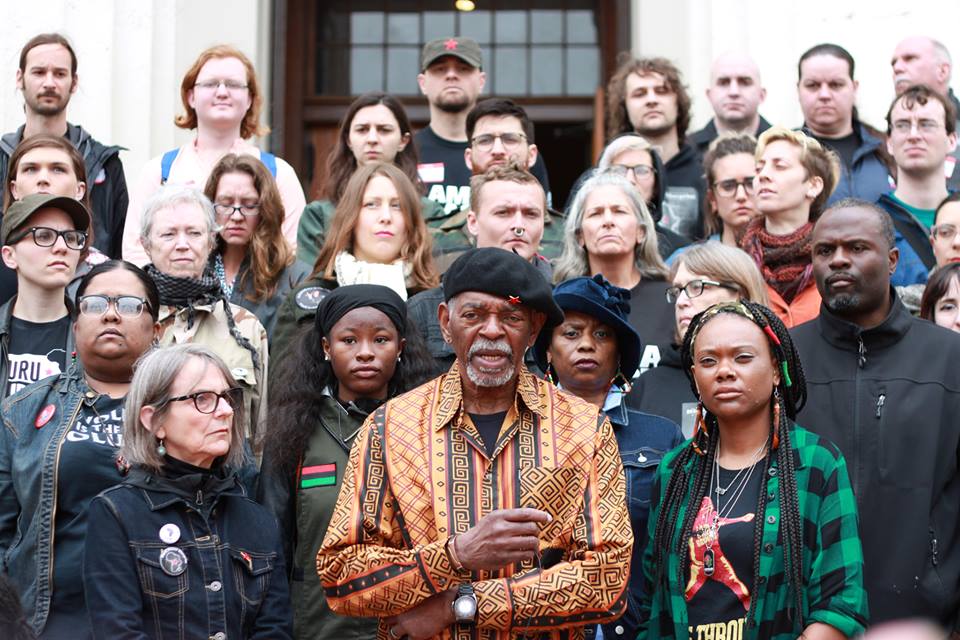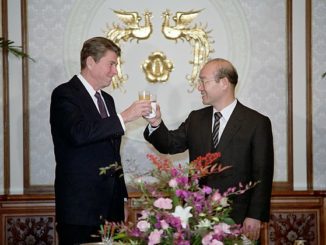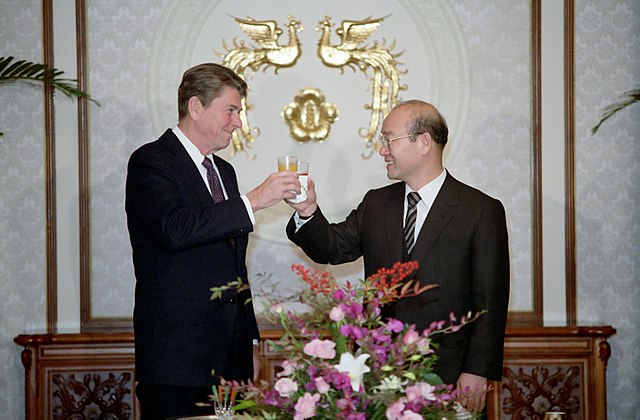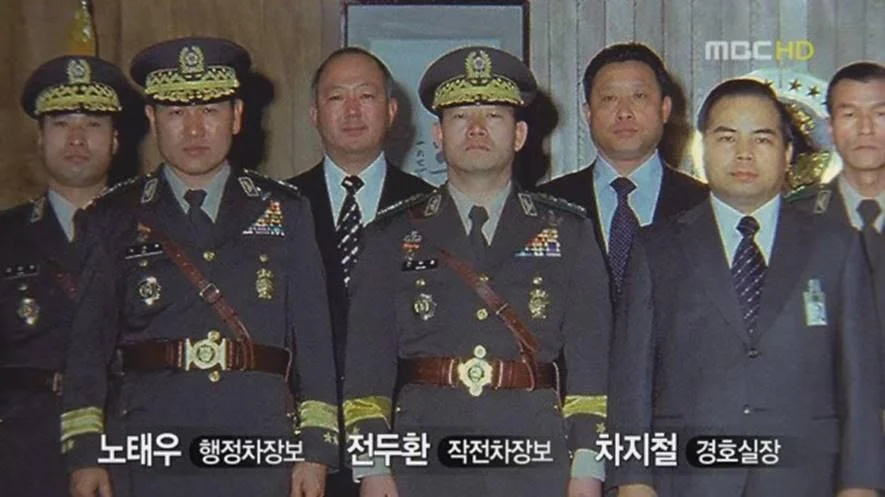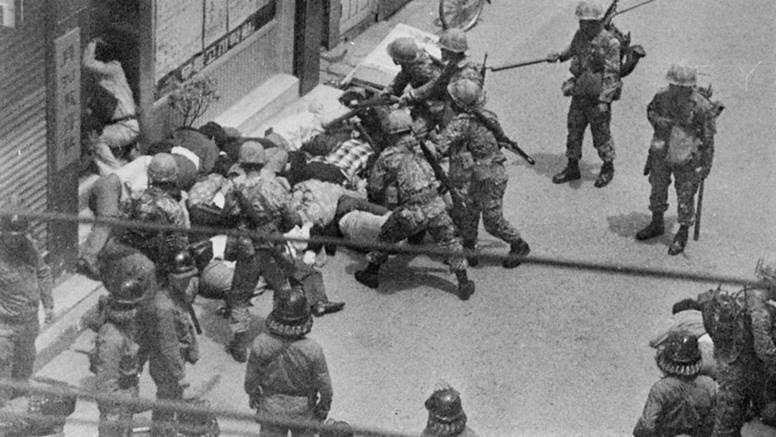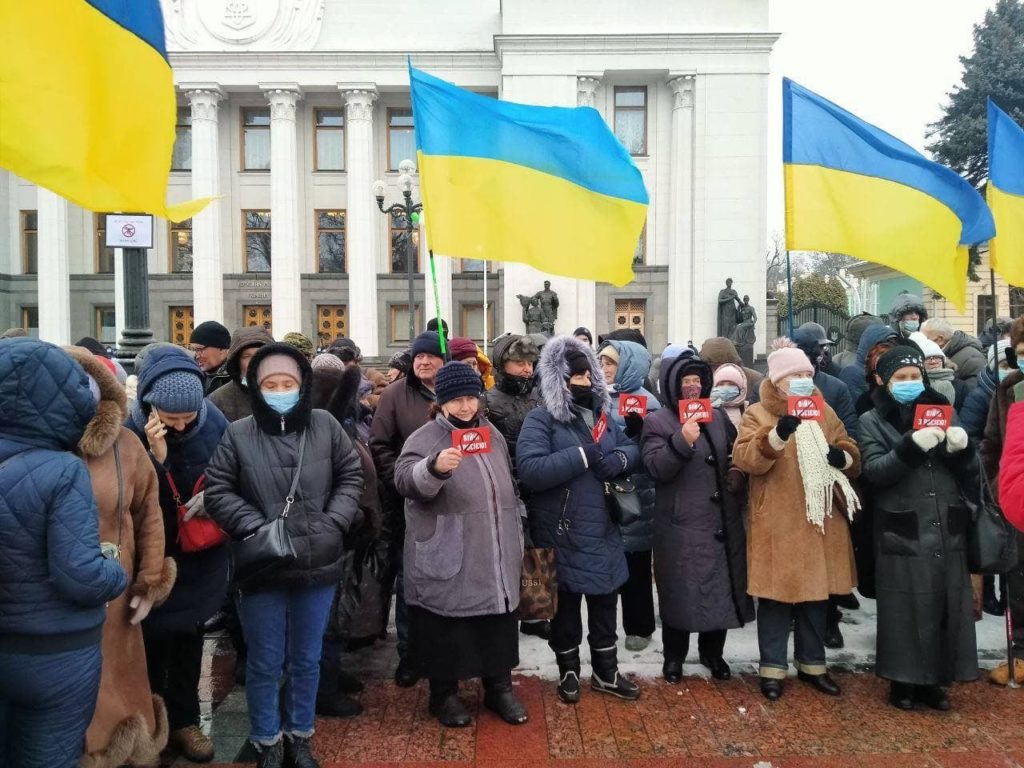
Since Russia began what they call the “special operation” on February 24 in Ukraine, the corporate media has reported the Ukrainian population is united in resistance against the Russian military offensive. Aside from reports of civilians volunteering in a variety of non-military support roles, Ukrainian President Volodomyr Zelensky and other state officials have urged civilians to take up arms. Then, on March 9, Zelensky approved a law that allows Ukrainians to use weapons during wartime and negates legal responsibility for any attack on people perceived to be acting in aggression against Ukraine. The Ukrainian Ministry of Defense even posted a graphic online with instructions on how to launch Molotov cocktails at tanks.
We will give weapons to anyone who wants to defend the country. Be ready to support Ukraine in the squares of our cities.
— Володимир Зеленський (@ZelenskyyUa) February 24, 2022
A poll conducted in early March by the Ukrainian sociological group, “Rating,” indicated that, of those Ukrainians surveyed, over 90 percent supported their government’s war effort, and 80 percent claimed willingness to participate in armed resistance. However, this survey excluded people who live in the self-proclaimed independent republics of Donetsk and Lugansk in eastern Ukraine’s Donbass region. It also did not include the 1 million Ukrainians who had by then already fled the country. Since the survey, an additional 3.6 million have fled.
Beneath the façade of chest-beating patriotism, however, lies an anti-war movement. Just as it is diverse in its motivations to oppose the war, this movement is decentralized geographically and appears not unified enough to move as one force.
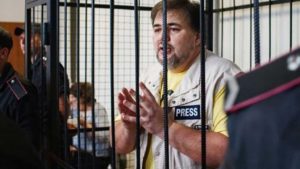
In post-Maidan Ukraine, opposition to militarism had already been a slippery slope, well before the current Russian incursion. The case of Ruslan Kotsaba, a Ukrainian journalist and conscientious objector, was perhaps the first such of state suppression under military law that had gained some degree of international attention, at least from human rights and pacifist organizations. Kotsaba was originally a proponent of the 2013-14 Euromaidan protests against the government of later-ousted President Viktor Yanukovych. But he began changing course when he spoke out against the 2014 violence in the majority ethnic Russian Ukrainian region of Donbass. He posted a now-notorious YouTube video in 2015, calling for a mass boycott against the mobilization in the far eastern region. After garnering hundreds of thousands of views, Youtube yanked it. For these statements, Kotsaba was arrested, detained, and charged with treason and “obstruction of the legitimate activities of the armed forces of Ukraine.” After being sentenced to 3-1/2 years on the latter charge, and spending more than a year in prison, his conviction was overturned on appeal. But, in 2017, a higher court reopened the case and his trial recommenced in 2021. Shortly before the recent escalation with Russia, the state prosecution was suspended, though not entirely concluded. This article provides a glimpse into the prevailing sentiments toward anti-war expressions in Ukraine. It comes from a Kharkiv-based “human rights protection group,” yet it describes the suspension of his prosecution as unjust, given his “active collaboration with the Russian state.”
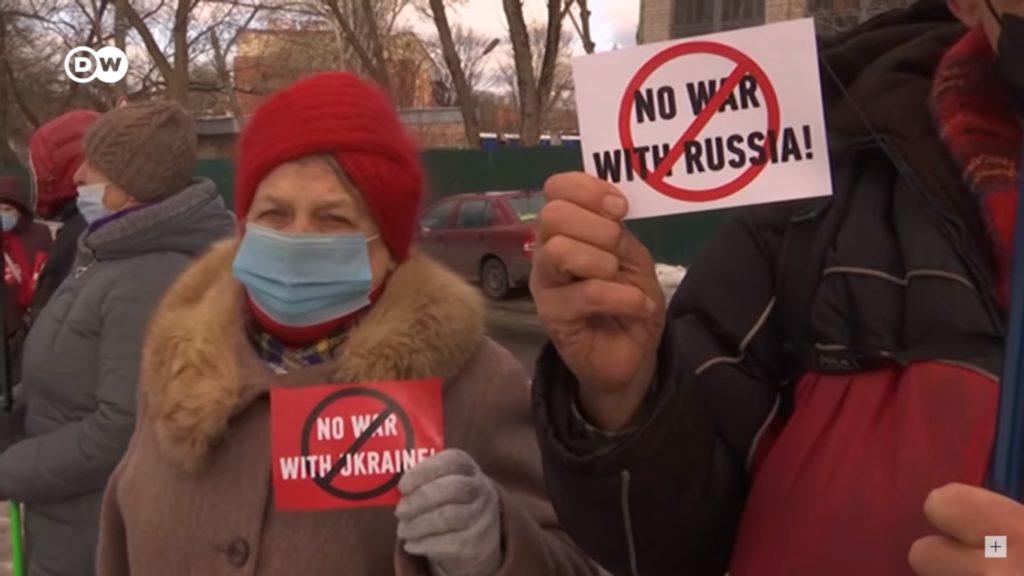
‘Anyone Will Rat You Out’
This reporter spoke with someone who would only go by the name, “Pavel.” He belongs to a now-banned Kyiv-based Ukrainian Marxist group. Pavel recently moved from Ukraine to Bucharest, Romania, and declined to give his real name or the name of his group. In 2015, the Communist Party was outlawed in Ukraine, on grounds it promoted “separatism.” More recently, on March 22, a month into the Russian incursion, Zelensky banned 11 mostly left-wing opposition parties. Pavel cited these bans, and the well-being of his family remaining in Ukraine, as reasons for his anonymity.
“Anyone who says anything against the military, protests against NATO, or really, opposes the government from any direction, is immediately labeled ‘pro-Russian,’” the 26-year-old told Toward Freedom. “Anyone is bound to rat you out as a Russian spy if they disagree with you: Nationalists or even other ‘leftists,’ like anarchists or progressives. Most of the country has joined forces with the nationalists. SBU [Ukrainian Secret Service] will catch wind of a protest, a meeting, or an article, and they’ll speak to their friends in the ‘civil society,’ who will send armed nationalists to ‘handle’ you.”
He spoke of a close comrade from the Ukrainian city of Kharkiv, who had made statements on Facebook before February 24 against NATO interference in Ukraine and in support of the Minsk Agreements. These are 7-year-old brokered cease-fire accords between the Ukrainian government and Donbass separatists, who had declared independence for two Ukrainian oblasts (states), Donetsk and Lugansk. Pavel said this person had gone into hiding in early March because nationalist groups had threatened their life. The person believed nationalists were still searching for them. Pavel and the person in hiding know of others who had disappeared in years prior.
Beyond this exchange, and a handful of correspondences on WhatsApp and Telegram, it has been next to impossible to find Ukrainian war resisters who had left the country to speak on the record. This is unsurprising given that one month ago, Zelensky issued a decree of martial law, banning most men ages 18 to 60 from leaving the country.
Military Service a ‘Form of Slavery’
Ukrainian pacifist leader Yurii Sheliazhenko told this reporter the pre-wartime penalty for evading military service had been up to three years in prison, but penalties have been increasing indefinitely since February 24. It’s impossible to verify what the exact penalties are, he said, as such hearings and verdicts are now closed to the public, ostensibly for the “safety of the judges” involved. As of April 10, Ukraine’s border guard reported roughly 2,200 detentions of “fighting age” men who were trying to escape the country. Many reportedly used forged documents or attempted to bribe officials, and others have been found dead in rural border areas.

The 31-year-old Sheliazhenko, on the other hand, has not left Kyiv. Instead, he is working tirelessly with his organization, the Ukrainian Pacifist Movement (UPM), to promote a message of worldwide non-violent resistance to all forms of armed conflict, including on behalf of his own country. His organization was founded in 2019, initially to oppose mandatory military service, which he calls a “form of slavery.”
Toward Freedom had the opportunity Sunday to speak by phone for two hours. He noted that he was equally opposed to the practice in Russia, or in any other country. But, in 2019, as the war raged on in the Donbass region, conscription in Ukraine began to take on an “especially cruel nature. Young men were being given military summonses off of the streets, out of night clubs and dormitories, or snatched for military service for minor infractions such as traffic violations, public drunkenness, or casual rudeness to police officers. In Ukraine, if you do not respond to such a summons, you will be detained.”
Sheliazhenko’s pacifism developed in childhood, where in the final days of the former Soviet Union, he immersed himself in the works of authors Ray Bradbury and Isaac Asimov at “peaceful” summer camps in the Ukrainian countryside. These were a contrast to today’s militarized, nationalist-themed summer camps springing up all over the country since the Euromaidan.
Now, he is a conscientious objector. “[There is] no exemption for conscientious objectors in Ukraine, even for clergy or religious organizations.” He noted that a 2016 UN Declaration on the Right to Peace failed to protect conscientious objection on the level of international law. Plus, transgender and gender-non-conforming people are caught in a Catch-22. “In Ukraine, because trans women are treated legally as men, they are not exempt from the martial law order,” Sheliazhenko said. “But then, they are also prohibited from fighting in the military. There are some horrible stories about LGBT people being abused both on the borders—attempting to leave—and within the military here in Ukraine.”
He describes Ukrainian society as increasingly militarized and that Nazism has become a real issue: “Our country has created an existential enemy, and now they say all people should unite around a nationality and a leader! The country has generally shifted far to the right. There are of course Neo-Nazis. But then many of these people are not perceived as ‘Neo-Nazis,’ but as ‘defenders of the country.’” He noted that the cease fires in the Minsk Agreements had been violated on an almost daily basis, by both Ukrainian forces and separatist militants. That said, a perusal of the OSCE Special Monitoring Mission to Ukraine’s camera logs in Donbass, especially in the days leading up to February 24, show that almost every day, the first strikes were recorded from “government-controlled” locations, meaning Ukrainian military territory. By the time the war escalated in February, the UPM’s mission expanded past its usual opposition to conscription, and into directly challenging the military mobilization in Ukraine and in Russia. Of particular concern to the UPM is the role of NATO, and the unlimited shipment of weapons coming from the West. “When the UN failed to become a true organization of global, peaceful law enforcement, the U.S. developed NATO to institute global violent governance,” Sheliazhenko said. “These NATO weapons are moving this war to escalation, and it’s very profitable to the weapons corporations, like Raytheon, Lockheed and Boeing. [U.S. Secretary of Defense] Lloyd Austin is a board member of Raytheon!” The latter claim is correct.
This reporter asked Sheliazhenko if he was concerned for his own safety and about the nature of the risk he takes in publicly opposing his government and the war. “I will not fight in a fratricidal war, and no one should. But luckily, I am a consistent pacifist,” he replied. “If my summons comes, I will not go. And I have taken some precautions.”
Sheliazhenko said he also speaks against Russian military actions. However, he went on to explain peace activists would put themselves in danger of being arrested if they suggested Ukraine give up the Donbass region to the self-proclaimed independent republics. Fortunately for him, because he does not discuss territorial concessions, he is not deemed a threat. “I am seen maybe more as a freak, a clown.”
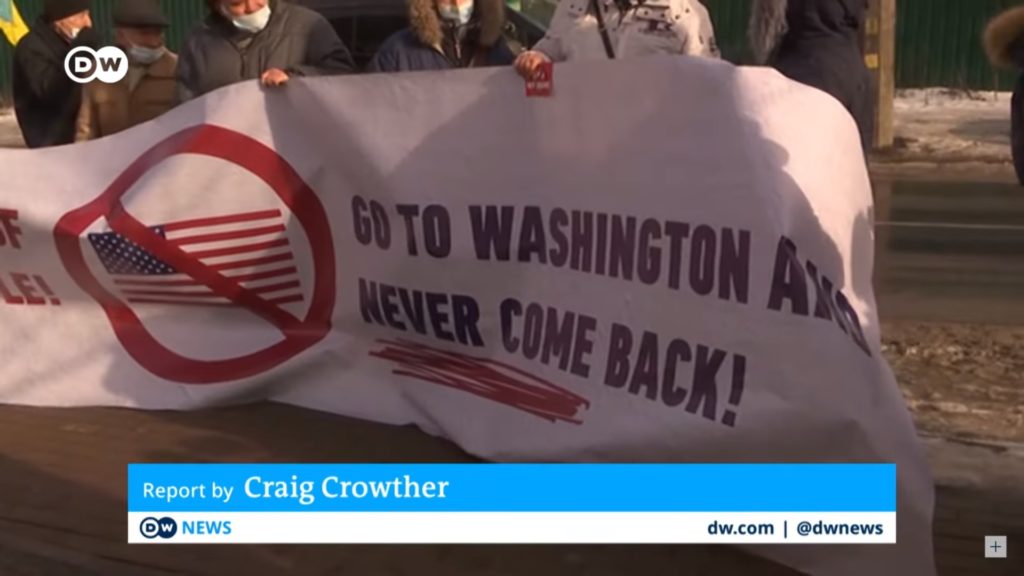
‘Millions Don’t Support Authorities’
Another perspective came from Alexey Albu, 36, a self-described communist and anti-fascist from Borotba, a Ukrainian revolutionary union that was banned along with communist parties in 2015. Albu represented the anti-Maidan movement in 2014 mayoral elections in Odessa, his home city. But he was forced to flee after massacres that took place May 2, 2014. Dozens had been left dead.
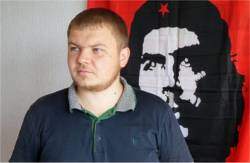
“In the press, there began to appear some accusations that it was my demand to shelter in the trade union building, and so I was guilty in the deaths of 42 people. Of course, this was not true,” Albu explained in Russian to this reporter. “But I realized that the authorities were preparing public opinion. On the 8th of May, I got information that the SBU would arrest me and my comrades the next morning. After that, I was put on a most-wanted list, but I was already in Crimea.”
Albu is now in the city of Lugansk, in the Lugansk People’s Republic. From there, he remains in regular contact with comrades back in territory controlled by the Ukrainian government.
“I want to say that millions of people in Ukraine do not support the far-right authorities, but all of them are really frightened.” A similar sentiment was documented in Toward Freedom’s March 21 article. “They are afraid of arrests, tortures, kidnappings,” Albu added. “Many notable people in opposition have been kidnapped and disappeared since the beginning of the military operation.” Some of those include former leader of the Ukrainian Union of Left Forces, Vasiliy Volga, and political scientist Dmitriy Dzhangirov. “Worse, many people who were in opposition to Kiev were detained, and we still don’t know about their fate. For example, the Kononovich brothers, leaders of the Komsomol [Young Communist League], and hundreds of other people.” Accounts of the March 6 detention of the Konovich brothers, accused of being “pro-Russian,” were widespread in international left-wing circles, as were demands to set them free.
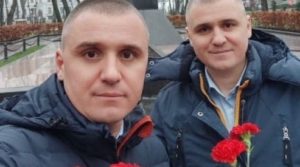
Albu reiterated the anti-war movement’s demand that the Ukrainian state demilitarize right-wing Ukrainian state forces. He also emphasized that, behind media narratives that show a nation of unified anti-Russian freedom fighters, much dissent can be found.
“You can see the real relation of so many of the people to the military operation in liberated zones, like Kherson or Melitopol,” Albu said, suggesting fear of state repression often veiled popular opinion until Russian forces would take control of an area. “Once the Kiev government is not in control, people [will] support the end of this right-wing occupation very widely.”
Fergie Chambers is a freelance writer and socialist organizer from New York, reporting from eastern Europe for Toward Freedom. He can be found on Twitter, Instagram and Substack.

